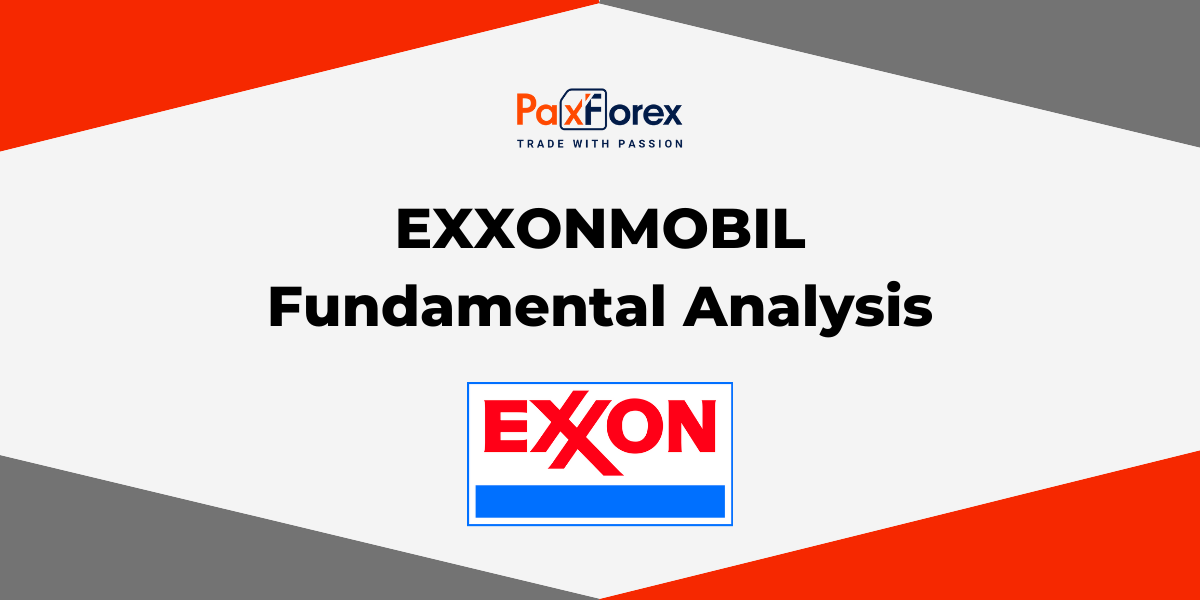
Source: PaxForex Premium Analytics Portal, Fundamental Insight
ExxonMobil does not believe fossil fuels will disappear. The company believes that oil and gas will play a vital role in fueling the economy in the future, even as cleaner alternatives accelerate. This is partly because of their lower relative costs and the huge technological leap needed for fuel substitutes such as clean hydrogen to become commercially viable.
Another reason Exxon sees a future for fossil fuels is that they can reduce carbon dioxide emissions by capturing and storing carbon. The oil giant predicts that by 2050 the fossil fuel cleanup market could be worth $4 trillion.
Carbon capture removes carbon dioxide from the air from fuel combustion and industrial processes so that it does not enter the atmosphere and negatively impact the climate. The captured carbon dioxide is then transported via pipelines or ships to underground geological formations for storage. There is also the possibility of reusing the captured carbon dioxide for other purposes.
The one potentially large market for captured carbon dioxide is a process known as enhanced oil recovery (EOR). Oil companies, including Exxon, Occidental Petroleum, Denbury Resources, and Kinder Morgan, inject carbon dioxide into legacy oil reservoirs to increase pressure, resulting in increased production. Many of these companies are now using carbon dioxide extracted from underground reservoirs to enhance oil recovery. However, they are increasingly looking to use captured carbon for EOR purposes.
In addition to EOR, potential applications of captured carbon include the production of other fuels, such as synthetic jet fuel, and the production of building materials, such as concrete.
Although carbon dioxide has some potential applications, Exxon and other companies in the energy sector initially focused on its underground storage. Over the next six years, the company is investing more than $15 billion to reduce greenhouse gas emissions through carbon capture and storage, hydrogen production, and biofuels. The company is already a world leader in carbon capture, extracting more carbon dioxide from the air than any other company.
However, the company has grand ambitions to build an even larger carbon capture and storage business. Exxon, for example, is working on a plan worth up to $100 billion to capture the carbon produced by petrochemical plants, power plants, and other heavy industries along the Houston Ship Canal. Under the plan, industrial plants would install devices to capture the carbon dioxide before it leaves their plants. They could use it to manufacture products or transport it through pipelines to the Gulf of Mexico, where it would be injected into subsea formations.
Exxon is also considering a large-scale carbon capture and storage center in Australia. It would capture emissions from industries in the Gippsland Basin and transport the carbon dioxide to a depleted oil field off the country's coast through existing pipelines.
Exxon is one of many energy companies working to develop carbon capture and storage projects. EnLink Midstream and Talos Energy are working together to develop comprehensive carbon capture, transport, and sequestration solution for industrial carbon dioxide emitters along the Mississippi River. The proposed project would use a significant portion of EnLink's pipelines in the region to transport the captured carbon dioxide and move it to Talos' River Bend sequestration site in Louisiana.
Meanwhile, EnLink and Enterprise Products Partners are working with a subsidiary of Occidental Petroleum on potential carbon capture and storage solutions. EnLink's project with Occidental will focus on another section of the Mississippi River corridor, while Enterprise Products Partners is working on a project along the Houston Ship Canal. These companies will provide existing and new pipelines to transport captured carbon to sequestration centers operated by Occidental Petroleum.
ExxonMobil believes that carbon capture and storage are the solution to the world's energy problem. It can make fossil fuels much cleaner while keeping costs low compared to alternative fuels. This leads the oil giant to make big bets on the future of carbon capture. If this bet proves to be correct, it could pay big dividends, allowing the company to continue producing oil and gas while earning significant revenue from carbon capture and storage.
As long as the price is above the 91.50 level, follow the recommendations below:
- Time frame: D1
- Recommendation: long position
- Entry point: 103.23
- Take Profit 1: 106.00
- Take Profit 2: 110.00
Alternative scenario:
If the level of 91.50 is broken-down, follow the recommendations below:
- Time frame: D1
- Recommendation: short position
- Entry point: 91.50
- Take Profit 1: 88.00
- Take Profit 2: 83.00













